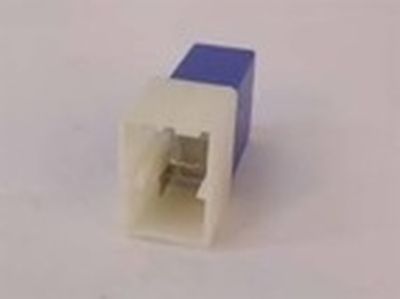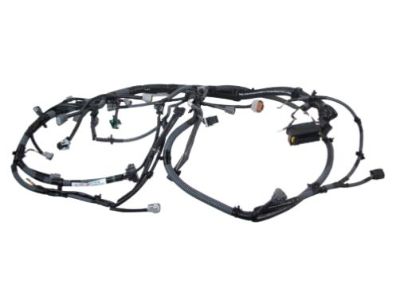×
- Live Chat
- 1-888-726-6993

My Garage
My Account
Cart
Genuine Nissan Frontier Relay
Wire Relay- Select Vehicle by Model
- Select Vehicle by VIN
Select Vehicle by Model
orMake
Model
Year
Select Vehicle by VIN
For the most accurate results, select vehicle by your VIN (Vehicle Identification Number).
48 Relays found
Nissan Frontier Trailer Tow Harness Relay - Required for Trailer Tow Harness 999T8-XZ000
Part Number: 25230-79917$7.57 MSRP: $11.38You Save: $3.81 (34%)Ships in 1-3 Business DaysNissan Frontier Relay
Part Number: 25230-79915$7.57 MSRP: $11.38You Save: $3.81 (34%)Ships in 1-2 Business DaysNissan Frontier Relay
Part Number: 25230-9B900$22.52 MSRP: $33.84You Save: $11.32 (34%)Ships in 1-2 Business DaysNissan Frontier Relay
Part Number: 25230-7996A$28.92 MSRP: $43.45You Save: $14.53 (34%)Ships in 1-2 Business DaysNissan Frontier Relay-Horn
Part Number: 25630-79960$17.16 MSRP: $25.78You Save: $8.62 (34%)Ships in 1-2 Business DaysNissan Frontier Relay
Part Number: 25230-79918$30.53 MSRP: $45.87You Save: $15.34 (34%)Ships in 1-2 Business DaysNissan Frontier Relay
Part Number: 25230-9B905$33.41 MSRP: $50.20You Save: $16.79 (34%)Ships in 1-3 Business DaysNissan Frontier Relay
Part Number: 25230-79964$28.92 MSRP: $43.45You Save: $14.53 (34%)Ships in 1-3 Business DaysNissan Frontier Relay
Part Number: 25230-79945$7.57 MSRP: $11.38You Save: $3.81 (34%)Ships in 1-3 Business DaysNissan Frontier Relay
Part Number: 25230-C9963$28.92 MSRP: $43.45You Save: $14.53 (34%)Ships in 1-2 Business DaysNissan Frontier Relay
Part Number: 25230-79963$28.92 MSRP: $43.45You Save: $14.53 (34%)Ships in 1-2 Business DaysNissan Frontier Harness Assembly-EGI
Part Number: 24011-EA271$646.62 MSRP: $971.64You Save: $325.02 (34%)Ships in 1-3 Business DaysNissan Frontier Relay
Part Number: 25230-79982$33.41 MSRP: $50.20You Save: $16.79 (34%)Ships in 1-2 Business DaysNissan Frontier Harness Assembly-EGI
Part Number: 24011-EA270$575.60 MSRP: $864.91You Save: $289.31 (34%)Ships in 1-3 Business DaysNissan Frontier Harness Assembly-EGI
Part Number: 24011-ZP90B$568.77 MSRP: $854.65You Save: $285.88 (34%)Ships in 1-2 Business DaysNissan Frontier Harness Assembly-EGI
Part Number: 24011-9BA0B$500.18 MSRP: $751.58You Save: $251.40 (34%)Ships in 1-3 Business DaysNissan Frontier Harness Assembly-EGI
Part Number: 24011-ZP50B$515.90 MSRP: $775.20Limited AvailabilityYou Save: $259.30 (34%)Nissan Frontier Harness-EGI
Part Number: 24011-9BF6A$282.87 MSRP: $425.05You Save: $142.18 (34%)Ships in 1-3 Business Days
| Page 1 of 3 |Next >
1-20 of 48 Results
Nissan Frontier Relay
If you need any OEM Nissan Frontier Relay, feel free to choose them out of our huge selection of genuine Nissan Frontier Relay. All our parts are offered at unbeatable prices and are supported by the manufacturer's warranty. In addition, we offer quick shipping to have your parts delivered to your door step in a matter of days.
Nissan Frontier Relay Parts Questions & Experts Answers
- Q: What is the purpose of relays on Nissan Frontier's electrical system?A: Several electrical accessories in the vehicle, such as the fuel injection system, Horns, starter, and fog lamps use relays to transmit the electrical signal to the component. Relays use a low-current circuit (the control circuit) to open and close a high-current circuit (the power circuit). If the relay is defective, that component will not operate properly. Most relays are mounted in the engine compartment fuse/relay boxes, with some specialized relays located above the interior fuse box. The covers of the engine compartment relay boxes have a printed key to identify the relays. There are also several relays located above the interior fuse box. If a faulty relay is suspected, it can be removed and tested using the procedure below or by a dealer service department or a repair shop. Defective relays must be replaced as a unit. If you can't determine the correct connection from the wiring diagrams, however, you may be able to determine the test connections from the information that follows. There are six basic types of relays used on these models. Some are normally open type and some normally closed, while others include a circuit of each type. On most relays, two of the terminals are the relay control circuit. The other terminals are the power circuit. Some relays may be marked as an aid to help you determine which terminals are the control circuit and which are the power circuit. To test a relay connect an ohmmeter across the two terminals of the power circuit, continuity should not be indicated. Now connect a fused jumper wire between one of the two control circuit terminals and the positive battery terminal. Connect another jumper wire between the other control circuit terminal and ground. When the connections are made, the relay should click and continuity should be indicated on the meter. On some relays, polarity may be critical, so, if the relay doesn't click, try swapping the jumper wires on the control circuit terminals. If the relay fails the above test, replace it.









































